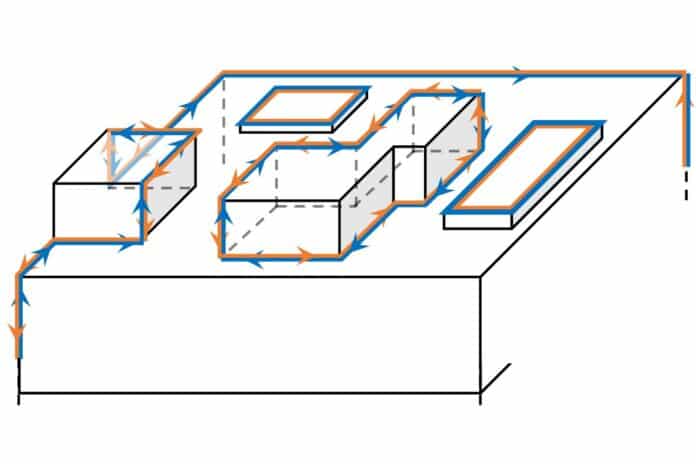Researchers have explored higher-order topological insulators (HOTIs) for their unique ability to conduct electricity along one-dimensional lines on their surfaces. However, distinguishing this property experimentally from other effects has proven challenging.
A team of physicists took a different approach by studying the interiors of these materials and identified a unique surface signature for HOTIs that determines how light reflects from their surfaces. This discovery could be used to experimentally confirm the existence of these topological states in real materials.
Scientists have observed that the surfaces of higher-order topological insulators (HOTIs) stand out as non-trivial or featureless when studied more carefully. Topological insulators have been recognized for their capacity to conduct electrical currents on their surfaces while maintaining insulating interiors. In the case of HOTIs, electrical conduction is confined to a one-dimensional edge or “hinge” rather than extending across the entire two-dimensional surface.
Benjamin Wieder, a faculty member at the Institut de Physique Théorique, Université Paris-Saclay, and project co-lead, said, “Charles Kane, who discovered topological insulators, introduced a good analogy. We can think of standard topological insulators as Hershey’s Kisses™. A conducting metal foil wrapped around an insulator that doesn’t conduct electricity, the chocolate, in this case, is a good way to understand them. With HOTIs, though, it’s as though someone took the foil and crumpled it into a thin ring encircling the chocolate.”
While conducting states on surfaces have been observed in typical topological insulators, discerning the hinge in HOTIs has proven challenging. This property can only exist in material samples with an unusually high degree of symmetry, necessitating unrealistically perfect crystal structures.
In response, researchers shifted their focus from the hinge state to the interior, where electrons tend to “delocalize” from individual atoms and spread throughout the entire material. In contrast to previous studies treating all electrons uniformly, the researchers considered differences in spin – a property of electrons that allows them to act as miniature magnets.
Kuan-Sen Lin, a physics graduate student at the U. of I. and the study’s lead author, said, “When we divided the interior electrons into their two possible spin states, up and down, we saw that each state leaves a unique surface signature. Even though the surface of a HOTI seems uninteresting, when you look at what each spin is separately doing on the surface, an unmistakable new behavior emerges that we hope will soon be measured in the experiment.”
Electrons with different spins act like magnets and respond differently when an electric voltage is applied to the material. This causes the two spin states to accumulate on opposite sides. The accumulation can be detected by utilizing the magneto-optic Kerr effect, wherein the polarization or orientation of light changes upon reflecting from the surface of a magnet.
In the context of HOTIs, researchers calculated the polarization change from each spin state and found it to be exactly half the change that would result from an ordinary insulator.
Gregory Fiete, a physics professor at Northeastern University and a corresponding author on the study, said, “In the Kiss analogy, we might expect that, because the foil has been crumpled, the chocolate is in direct contact with the air. With the spin-dependent surface behaviors we found, we can say that there is, in fact, a transparent layer that keeps the chocolate separate from the rest of the supermarket.”
Building on first-principles calculations using a specialized theoretical toolkit developed for this study, the researchers identified bismuth bromide as a strong candidate for observing the specified effect. They are collaborating with U. of I. physics professor Fahad Mahmood and U. of I. materials science & engineering professor Daniel Shoemaker to design and conduct experiments based on the study’s proposals.
The properties of HOTIs highlighted in this study could prove valuable in quantum computing and spintronic devices, but experimental verification is essential. When examined properly, the researchers expressed optimism that their work demonstrates the existence of mysterious and advantageous features in the interiors and surfaces of topological materials.
Journal Reference:
- Lin, KS., Palumbo, G., Guo, Z. et al. Spin-resolved topology and partial axion angles in three-dimensional insulators. Nat Commun 15, 550 (2024). DOI: 10.1038/s41467-024-44762-w
